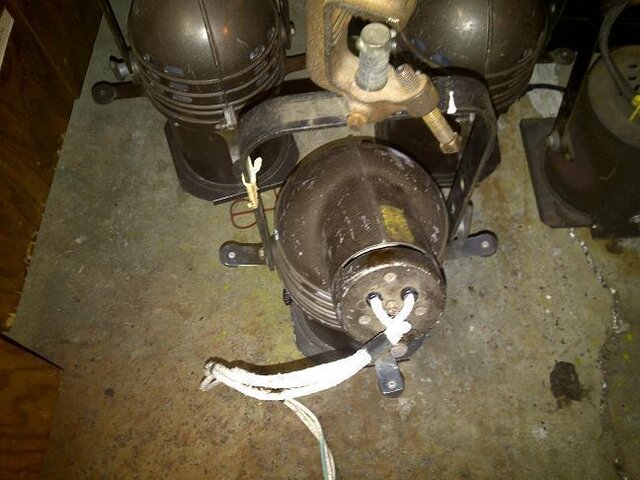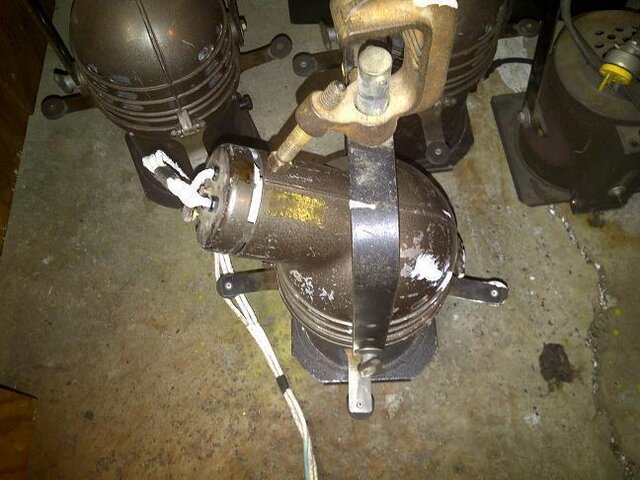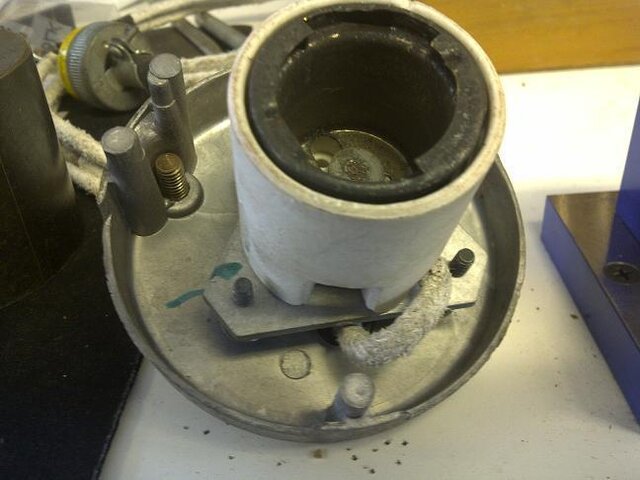Yessir, those are
Altman #360 ellipsoidals (precursor to the
360Q). These take the exact same shutters as the
360Q, which are readily available through
Production Advantage (and others) for about $2.50 a piece. In fact, the entire
shutter gate is the same, so if you need new
shutter spacer and/or pressure plates, they are interchangeable. These particular fixtures date back to the '70's - early '80's. They are still highly serviceable, but the greenish lenses will detract a little from your light output. Not a huge deal, but they won't quite match newer
360Q's. Beware of breaking the locking dog discs on the
yoke -- I don't believe they are easy to come by these days. Don't force tilt these fixtures or you will
snap those tabs right off, which will cause your lights to frequently
drop focus.
Just realized that I forgot to add a link to my last post. Here are
Production Advantage's electrical supplies:
http://www.productionadvantageonline.com/Electrical-Supplies/
And here are the parts for the
shutter assembly:
http://www.productionadvantageonline.com/Altman-Lighting-Instrument-Parts/
Note that they have the lock dog discs listed but "without tabs". The #360 and early
360Q uses discs "with tabs". Not sure if these are interchangeable (or if you even need them)

. The picture doesn't seem to match the description.
Of course,
Production Advantage isn't the only dealer out there, but I have had a lot of success with them. A sales rep named Rocky Harlow was a huge help. If you need an exploded diagram of your fixtures, he'll be happy to email you one. You could probably find one here also with some searching (I'm sure derekleffew has it in his back pocket!)
*Make sure your fixtures still have the light
shield between the
lamp cap and
fixture housing. Also, note that the
shutter blades do not come with the insulated grips. You can either carefully drill out your old ones and rerivet them to the new blades (using aluminum rivets) or you can order them from the next
page of parts. Since you have so few fixtures, I'd spare the labor and order new grips and rivets. Buy yourself a
pop rivet gun from the hardware store for about $14 (the Arrow brand is nice). That will come in handy on future lighting projects also.
Tips on
shutter removal/reinstallation:
You will make your life much easier if you remove all the
shutter gate components if you're replacing the shutters. This is so you can verify that all the parts are there and in the right place, as well as perform any resurfacing maintenance you see fit. It is also easy just to start fresh, rather than attempt to slide the new shutters between the spacers. Here is the correct order (starting at the
lens) for future reference:
1.)
Gobo holder (align the
tab with the notch in the
fixture so that it rests securely and upright)
2.)
Shutter Spacer
3.) Upper and Lower shutters
4.)
Shutter spacer
5.) Left and Right shutters
6.)
Shutter spacer
7.) Pressure Plate
You don't have to, but a little graphite lube (emphasis on
little) will go a long way. Apply it between each
shutter/spacer set.
*The upper/lower and left/right
shutter order really doesn't matter, but top and bottom first is what I have always done.
You will most likely need to remove the grips in order to free the shutters. Either drill out the
rivet, or you can remove the entire
gate from the
fixture (effectively splitting it in half) and use a bench grinder to flatten the rivets. This will not free the grips, but it will make them slim enough to fit through the slot. Don't try cutting the shutters with tin snips -- personal experience says it won't work

.
Reinstall the new shutters and hardware in the same orientation and sequence that they came out. Be sure to get all the spacers in -- especially the one against the
gobo holder. Without it, the shutters will jam and basically be very frustrating, often without warning and only when you are trying to do a delicate
shutter cut (most likely the last
shutter you adjust will be the one to jam up)

.
Don't
rivet the grips on until the shutters are in the
fixture, unless you don't mind either grinding the
rivet heads down or redrilling/reriveting. I have found that the grips are still very secure even after grinding, so that may not be a bad idea (making future replacement easier).






